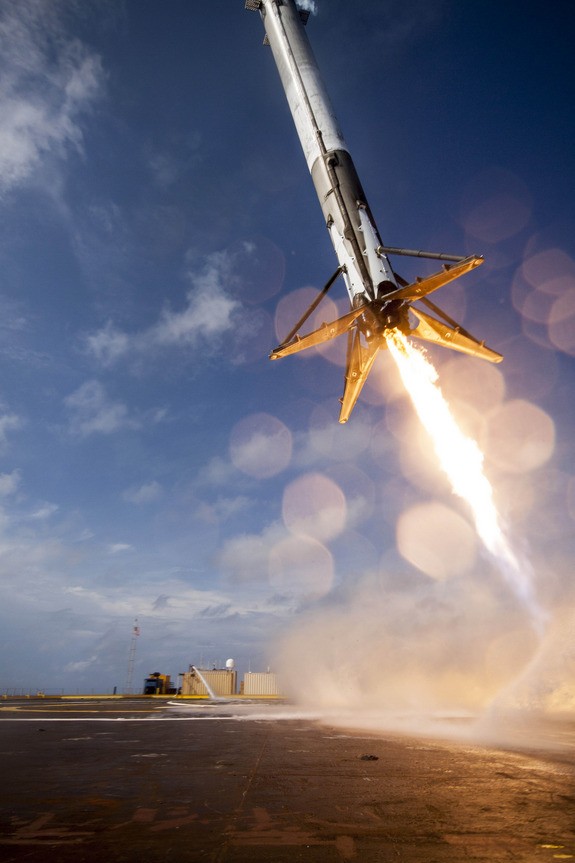Commenter skyhawk had this to say about the challenges:
the biggest problem with the boosters landing is that they can only throttle down the engine to 70% which still creates about 1.5 G’s of acceleration so they have to do a suicide burn to try to land it which doesn’t give much time to fix errors. install deploy-able flame buckets to redirect some of the thrust so it only produces .9 G’s, that way they can throttle from 1.5 to .9 without changing engine settings. boom, now you have the time you need to get rid of excess lateral velocity.
Commenter AC had this to say about the math involved:
That 24.5 tonnes cited for A5 is for a 63 degree orbit, while the 23.5 tonnes for the D4H is to 90 degrees. Given an approx 80 kg/degree payload penalty for D4H, the D4H payload to 63 degrees will be about 3 tonnes less than to 28.6 degrees, or ~25.5 tonnes, one tonne more than A5. Comparing GTO performance from CSG isn’t meaningful since neither will launch from there, but you can get equivalent payload to 1500 m/s GTO – about 7.5 tonnes for A5 with LH2 upper stage, 10 tonnes for D4H.
Basically this is what SpaceX wants to happen:
The main goal is to send Dragon safely on its way to the space station. SpaceX holds a $1.6 billion NASA contract to fly at least 12 unmanned cargo missions to the space station.
thanks to space.com for the great info
thanks to SpaceX for the pic
